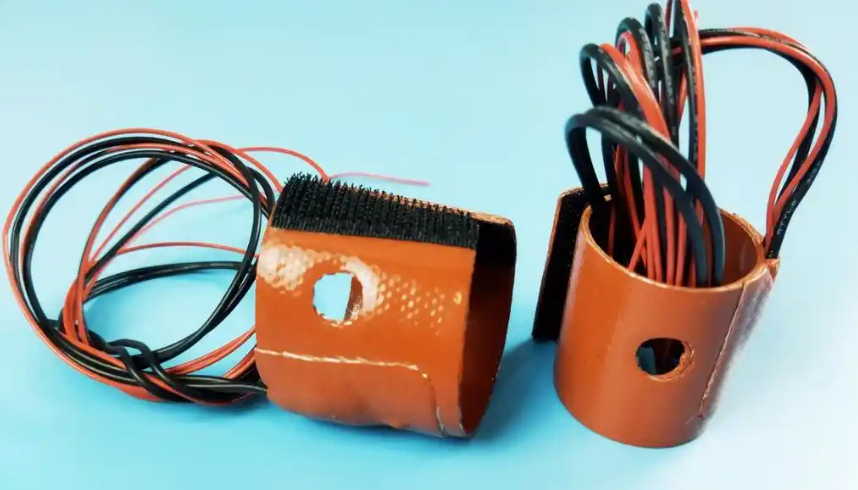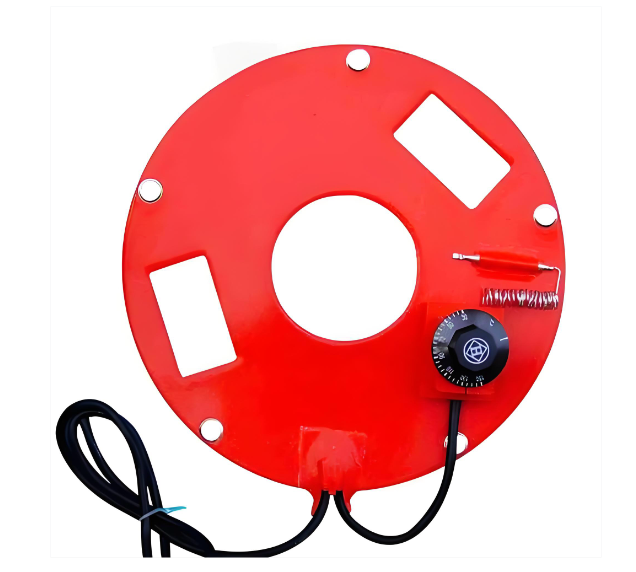A silicone rubber heater is one of the most practical tools for keeping storage batteries warm and reliable in cold conditions. Many users face the same issues every winter—slow charging, weak voltage, and sudden shutdowns. A simple, light, flexible heater can remove most of these worries. This guide explains how it works, why it matters, and what to consider when choosing a heater for your battery system.
A silicone rubber heater is a thin heating pad made from two main parts: a silicone rubber layer and a heating element inside. The heating element is usually an etched foil or resistance wire shaped into a circuit that spreads heat across the battery surface. Silicone rubber protects the heating element because it has strong insulation, is soft to the touch, and stays stable under high heat.
The material is flexible and can bend to match the shape of the battery case. Its low profile makes it suitable for tight spaces, such as battery trays, pack covers, and portable battery modules. These heaters warm up quickly, use low power, and maintain a steady temperature without large swings. For storage batteries, this stability is important because batteries rely on a stable internal temperature for best performance.

Yes. Small silicone rubber heaters can be powered by battery packs, especially when designed with low wattage. Many outdoor and mobile energy systems have no grid power during winter startup. In these situations, a battery-powered silicone heater is an effective solution.
A portable battery-driven heater works well when:
For example, a 12V battery can power a 12V silicone heater directly. A LifePO4 pack can power a custom heater at 6V or 12V depending on its BMS setup. In cold outdoor conditions—such as camping power stations, telecom boxes, and small AGV robots—battery-powered silicone heaters keep the battery warm enough to function without external support.
LifePO4 batteries struggle when the temperature drops below freezing. Internal chemical activity slows down. Charging becomes unsafe at very low temperatures. Discharging becomes weak, and voltage drops faster than expected. A silicone rubber heater is one of the most reliable ways to solve these winter issues.
To keep a LifePO4 battery warm:
With proper heating, the battery can start smoothly even after an overnight freeze. Many solar systems and telecom towers use silicone rubber heaters to avoid downtime in winter.

Yes. Silicone rubber has excellent heat safety. It stays stable even after thousands of heating cycles. It does not melt easily. It does not become brittle in cold areas. This makes it suitable for both indoor and outdoor projects.
Key safety features include:
With these features, silicone rubber heaters can be used in various fields like medical warmers, battery warmers, food equipment, lab devices, and telecom heating systems.
The working time depends on the battery capacity and the power draw of the heater. The larger the heater’s wattage, the faster the battery drains. The formula is simple:

Here is an example:
Runtime ≈ 240Wh ÷ 20W = 12 hours
If you use a 10W heater, the runtime doubles. If you use a 40W heater, the runtime is cut in half.
A thermostat or control module improves efficiency by switching the heater on only when needed. In mild winter conditions, the heater may operate only 20–40% of the time, stretching battery life even further.
Silicone rubber performs well across a wide temperature range:
However, storage batteries do not need high heat. They perform best at 40°C–60°C during winter charging. Most battery systems run the heater well below the material’s limits.

Some of our customers are always curious about silicone rubber heater price, they think it is too expensive, especially compared to flexible circuits. Actually, although thin and flexible, silicone rubber heaters require careful engineering. They are often more costly because of:
Most battery heaters are custom-made because each battery size is different. Custom work increases cost but provides much better performance and longer life.
| Item | Specification |
| Voltage | 5V / 12V / 24V / 48V / Custom |
| Power Density | 0.4–1.2 W/cm² |
| Max Operating Temp | 200°C |
| Recommended Battery Heating Temp | 40°C–60°C |
| Thickness | 0.5–1.5 mm |
| Heating Element | Etched foil / resistance wire |
| Surface Options | Silicone rubber, fiberglass-reinforced |
| Adhesive | 3M high-bond tape or silicone glue |
| Protection | Waterproof sealing / edge vulcanization |
| Control Options | Thermostat, NTC sensor, PID controller |
| Customization | Shape, hole positions, wire length, connectors |
Danyu Electronics often custom-fits heaters to the exact curves and size of the battery housing so the heat spreads smoothly without hot spots.
Storage batteries face tough weather, vibration, and long running hours. A stable heater is important. At Danyu Electronics, we specialize in custom silicone rubber heaters for battery packs used in:
Our heaters offer:
We also provide engineering support to calculate heater size, watt density, and control method to match your battery specification.
If you need a heater that protects your storage battery through winter, keeps temperature stable, and fits your system perfectly, Danyu Electronics can help you design the right solution from day one. Contact us right now to customize a silicone rubber heater for your battery!
Simply drop your email or phone number in the contact form, and we'll promptly reply you shortly.